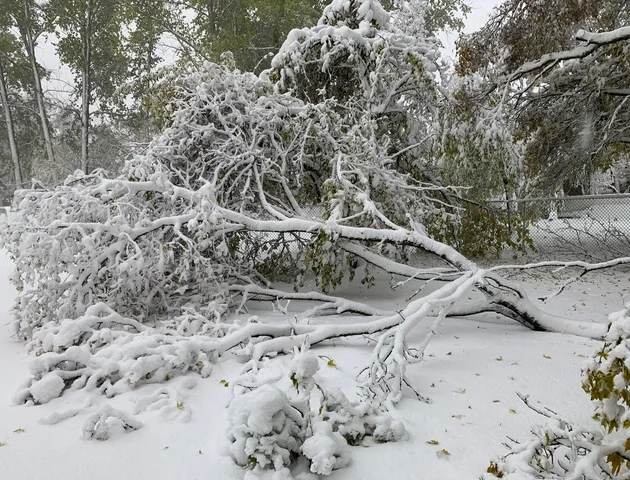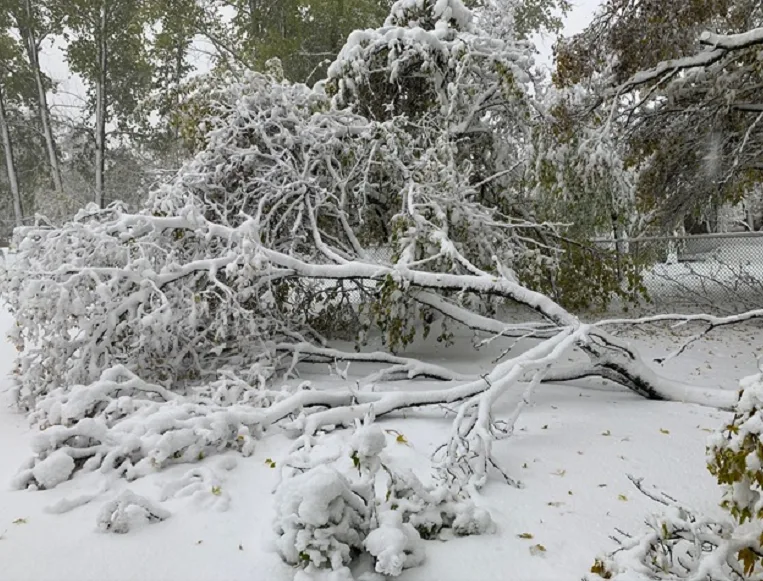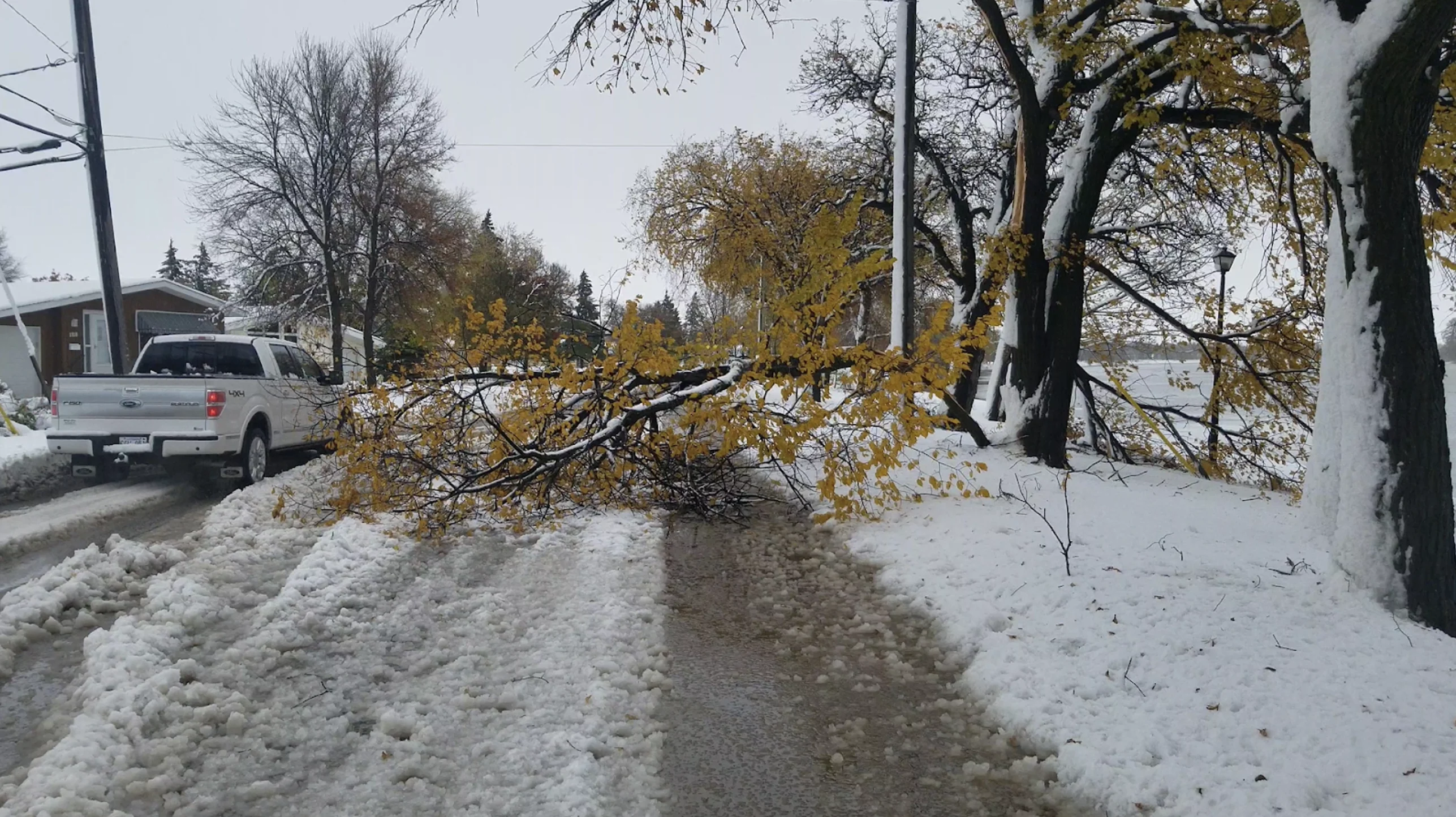
Manitoba's devastating 2019 Thanksgiving blizzard: A look back
It's been a year since the historic snowstorm of Thanksgiving weekend in southern Manitoba, which brought a hard-hitting blast of early winter weather that broke several records across the region.
It was the second major winter storm to occur on the Prairies early in the fall of 2019, following a storm not two weeks earlier in southwestern Alberta that dumped tremendous amounts of snow there as well.
But the difference between the impacts of the two storms was striking, which can be directly attributed to the liquid water equivalent of the snow. Impacts in southern Alberta were relatively limited despite larger snow totals, since the snow was drier, which tended to slough off trees and structures.

2019 Manitoba snowstorm. Courtesy: Kyle Brittain
In southern Manitoba, lesser overall totals managed to cause far greater damage, as the moisture-laden snow set up like concrete on trees still covered in foliage, as well as on powerlines – resulting in widespread power outages and damage to tree limbs.

Image: Skylar Ferguson, Winnipeg, Man.
In Winnipeg, 34 cm of snow fell over two days, which was the city’s biggest-ever October snowstorm, resulting in damage to 30,000 trees, as well as injuries to two people from collapsing tree branches. The Red River Floodway also had to be opened around the city for the first time ever in fall, following a record-wet September that had the ground already saturated.
Elsewhere in southern Manitoba, road crews were quickly overburdened by wind-driven snow that led to drifting and accumulations of over 70cm in places, as well as whiteout conditions that made for very hazardous travel. The Trans-Canada Highway along with many other secondary highways were closed, stranding travellers in numerous towns.
Winds gusted in excess of 90 km/h in places, which, when combined with sticky snow that clung to power lines, wreaked havoc on Manitoba’s energy grid. Up to 150,000 homes and businesses were without power at one point, which ended up being the single greatest power outage in the province’s history.

Courtesy: Kyle Brittain
PERSONAL REFLECTIONS
Chasing winter storms can have unique challenges all its own. I had originally intended to make the stonking drive from Calgary all the way to Winnipeg in one shot, but the storm ramped up to the point that it was unsafe for me to proceed past Portage La Prairie en route. The next morning, the Trans-Canada Highway closed on both sides of town, and the power went out in my hotel. I was stuck.
The Portage area ended being one of the hardest hit in Manitoba, with power outages affecting the entire town at one point. What was most striking about this storm was the treacherous combination of both extremely wet, and heavy snow, and the very strong winds.
I recall standing outside for a TV hit during the peak of the blizzard one evening, with the sky lighting up an eerie bluish-green with flickers reminiscent of lightning, as power flashes indicated an increasing number of power failures. The camera would go on to tip over mid-way through my hit in the strong winds, and I was faced with a short but harrowing drive back to my hotel as snow piled ever higher on the road, with power lines drooping dangerously low overhead.
WATCH THIS: KYLE BRITTAIN TRIES TO UPDATE US, GETS CAMERA BLOWN OVER
With a remaining island of power in downtown Portage, I was able to grab a slice of hot pizza and fuel up, should the need arise for me to warm up in my vehicle overnight as an escape from my cold, dark hotel room.
The following morning revealed incredible scenes of damage that I couldn’t believe snow could be capable of. Tree limbs were down all over the place, steel transmission towers were crumpled, and longer rows of hydro poles were snapped than I had ever seen with any summer severe weather event. Many people in the town were without power for their Thanksgiving weekend, so I couldn’t help but feel a little guilty driving back to Alberta when the highway opened.
The storm was truly as memorable as it was historic.










